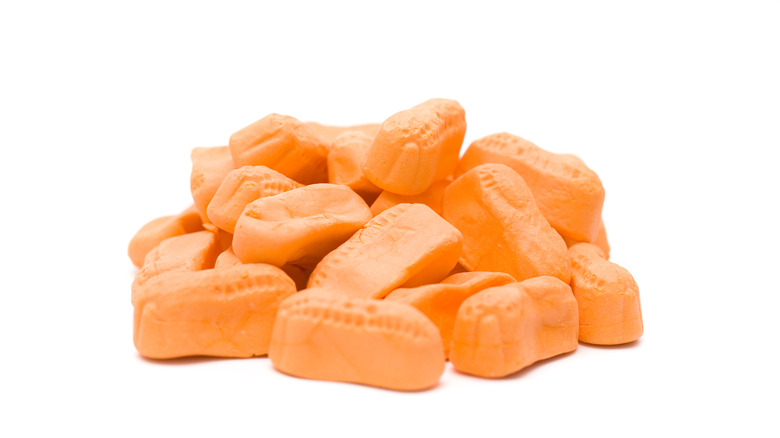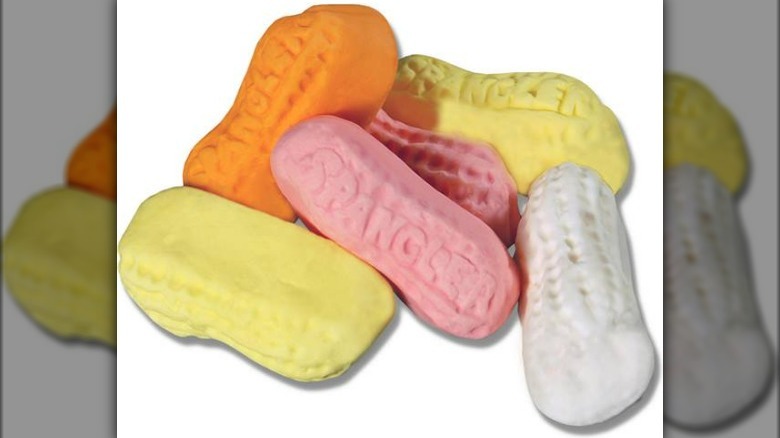The History Of Circus Peanuts Candy
Everything about the circus peanuts candy seems to run counter-intuitive to what you think they should be, from their fruity flavor to their soft texture. One of the oldest commercially sold candies, circus peanuts are now most often found in plastic bags alongside other classic candies that once sold for pennies like Tootsie Rolls and root beer barrels. All of a bygone era where 25 cents could actually buy you a bag of candy. For those unfamiliar with the peanut-shaped treat, one would assume that it tastes like peanuts, but they would be wrong. These orange-hued fluffy candies are flavored to taste like banana. And that's where a lot of the puzzlement begins.
Founded in 1906, Spangler Candy still produces circus peanuts and claims to be one of the largest makers of the treat in the United States. Once only available in banana flavor and seasonally, Spangler Candy creates its circus peanuts in vanilla, cherry, and banana flavors year-round. But perhaps surprisingly, not one variety is a peanut flavor, but that's how it is across the candy-making industry. The recipes followed by candy makers for circus peanuts are largely the same between companies and require a combination of sugar, gelatin, corn syrup, food flavoring, and a coloring additive.
Love them or hate them, circus peanuts are here to stay generations after they were first consumed. But people remain mystified by these candies, wondering why they were made to be a fruity treat that looks like a peanut.
Mysterious origins
Unfortunately, no one has a good answer to the question of when and who invented circus peanuts. Some believe it might have been a small confectioner that is no longer in business that created them, but that's just speculation.
John Flanyak, director of research and development for Brach & Brock Confections in Chattanooga, Tenn., told The Wall Street Journal in 1999 there is a theory that circus peanuts were given banana flavoring instead of peanut flavoring because it was more stable and it was less expensive to use than peanut oil. But, no one has a good answer about why the candy is peanut-shaped other than perhaps as a possible marketing tool. First made in the 1800s, circus peanuts were only sold in the spring until polyethylene film was created in the 1940s, and the candy was then able to be sold all 12 months. During World War II, when sugar was rationed, Spangler Candy sold a circus peanuts slurry as a sugar replacement.
The cheap treat was popular until the 1960s but then slowly fell out of favor and was eventually relegated to the "classic candy" section of the store. Today, circus peanuts remain a popular treat for those looking for a taste of nostalgia, even if the candy's flavor and texture don't quite make sense.

